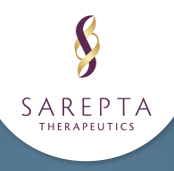Young Duchenne MD Advocate Travels to D.C. to Urge Passage of 21st Century Cures Act

 Ten-year-old Gabe Griffin of Alabama visited Washington, D.C., with his parents last month hoping to encourage Congress to pass a federal bill that could help accelerate the discovery of an effective treatment or cure for the rare and terminal form of muscular dystrophy he’s afflicted with.
Ten-year-old Gabe Griffin of Alabama visited Washington, D.C., with his parents last month hoping to encourage Congress to pass a federal bill that could help accelerate the discovery of an effective treatment or cure for the rare and terminal form of muscular dystrophy he’s afflicted with.
Duchenne muscular dystrophy (DMD) is an inherited disorder that occurs in about 1 out of every 3,500 to 5,000 male infants worldwide. There is sometimes a family history of DMD, although it often occurs in boys without a known family history. Due to the way the disease is inherited, it usually affects boys. The sons of females who are carriers of the disease (women with a defective gene, but no symptoms themselves) have a 50 percent chance of inheriting the disease. Daughters have a 50 percent chance of being carriers. Very rarely, a girl can be affected by the disease.
DMD is caused by a defective gene that inhibits production of the muscle protein dystrophin that plays a key structural role in muscle fiber function. In healthy muscle, dystrophin interacts with other proteins at the cell membrane to stabilize and protect the cell during regular activity involving muscle contraction and relaxation.
Boys and young men with DMD produce little or no dystrophin in their muscles, and this causes regenerative potential of dystrophic muscle fibers to diminish over time. Without dystrophin, normal activity causes excessive damage to muscle cells, and they are ultimately replaced by fibrotic tissue and fat, leading to a progressive loss of function.
Muscle wasting and weakness associated with DMD usually appear before age 6 and may appear as early as infancy. The voluntary muscles are the first affected, especially the pelvis, thigh, and calf muscles. Muscle weakness also takes place in the arms, neck and shoulders, and other areas, but not as early as in the lower half of the body.
Loss of muscle mass generally means most DMD boys are confined to wheelchairs in their early teenage years, then progressively lose the ability to independently perform activities of daily living such as using the restroom, bathing, and feeding themselves. In later stages they require breathing and feeding tubes. Duchenne eventually affects all voluntary muscles, involves the heart and breathing muscles in later stages, and is currently an incurable terminal disease. Life expectancy typically ranges from late teens to the mid-20s.
Although the molecular defect responsible for DMD was identified 20 years ago, there are currently no approved therapies for DMD in the United States. Treatment of DMD is generally aimed at controlling the onset of symptoms and maximizing quality of life, and the outpatient cost of care is very high for boys who are non-ambulatory.
 Scott and Traci Griffin note that outside of the Muscular Dystrophy Association Telethon started more than 50 years ago by comedian Jerry Lewis, there is very little funding for research on what is the No. 1 genetic killer of boys in the world. They have established a foundation called Hope for Gabe (H4G), a 501(c)(3) nonprofit (federal tax ID No. 27-1240341) that also sponsors an annual
Scott and Traci Griffin note that outside of the Muscular Dystrophy Association Telethon started more than 50 years ago by comedian Jerry Lewis, there is very little funding for research on what is the No. 1 genetic killer of boys in the world. They have established a foundation called Hope for Gabe (H4G), a 501(c)(3) nonprofit (federal tax ID No. 27-1240341) that also sponsors an annual  multistate bicycle ride event called Ride4Gabe. The Ride4Gabe 2016 route runs from Maine to Mobile, Alabama, with participating riders to begin cycling on July 29, and will cover roughly 2,218 miles over 11 consecutive days with riders cycling at about 15 mph.
multistate bicycle ride event called Ride4Gabe. The Ride4Gabe 2016 route runs from Maine to Mobile, Alabama, with participating riders to begin cycling on July 29, and will cover roughly 2,218 miles over 11 consecutive days with riders cycling at about 15 mph.
Gabe’s story can be found on the CaringBridge website here.
The Griffins are appealing to the U.S. Senate to pass the 21st Century Cures Act, which would enable the FDA to automatically approve what are referred to as “follow-on drugs” — medications that use the same technology as previously approved drugs but target different structures in order treat disorders for which there are with no known effective cures or treatments. Their visit to Washington included meetings with House Energy and Commerce Committee Chairman Fred Upton, R-Michigan, who is championing the bill. The Griffins talked to Upton about some of the challenges of the disease and how the 21st Century Cures Act would help Gabe using precision medicine.

They also met with House Majority Leader Kevin McCarthy, R-California, and U.S. Reps.
Bradley Byrne and Martha Roby of Alabama. A House Energy and Commerce Committee news blog dated March 30 titled “H4G: Hope for Gabe” reports that Gabe “has made quite an impact wherever he travels, whether it’s at the Alabama state capital in Montgomery or the halls of Congress in Washington,” and as Rep. Martha Roby tweeted after meeting Gabe last month, “Amid all the meetings, hearings & votes, one special visitor put it all in perspective.” Roby also recounts her meeting with Gabe in a column she wrote for the Montgomery Advertiser, “Special visitor makes impact on Capitol Hill.”
The Griffins said the success of landmark clinical trials is leading scientists to hope that a decisive decade for DMD research is at hand — a pivotal tipping point that could result in those currently afflicted perhaps being the last generation to die from Duchenne — or better yet, among the first generation to live.
 For example, Sarepta Therapeutics, a medical research and drug development company with corporate offices and research facilities in Cambridge, Massachusetts, has investigational therapies under way for DMD that are designed to skip an exon in the dystrophin pre-m RNA in order to enable synthesis of a functional shorter form of the dystrophin protein. Serapta’s lead clinical drug candidate Eteplirsen is designed to skip exon 51; a candidatae for exon 53 skipping (SRP-4053) is also in clinical development; and a candidate for exon 45 skipping (SRP-4045) has entered early clinical development.
For example, Sarepta Therapeutics, a medical research and drug development company with corporate offices and research facilities in Cambridge, Massachusetts, has investigational therapies under way for DMD that are designed to skip an exon in the dystrophin pre-m RNA in order to enable synthesis of a functional shorter form of the dystrophin protein. Serapta’s lead clinical drug candidate Eteplirsen is designed to skip exon 51; a candidatae for exon 53 skipping (SRP-4053) is also in clinical development; and a candidate for exon 45 skipping (SRP-4045) has entered early clinical development.
Serapta has other drug candidates in discovery and preclinical development that are designed to skip exons 44, 52, 50, 43, 55, 8, and 35, and the company says it is committed to exploring its technology’s potential to address all DMD patients who may be candidates for exon skipping. Serapta says approximately 13 percent of DMD patients may be amenable to exon 51 skipping, with available data suggesting that up to 80 percent of DMD patients have genotypes amenable to exon skipping.
But while research is moving rapidly, critics maintain the federal system of drug and device approval isn’t keeping pace and is in many ways a relic of another era, with dedicated scientists and leaders at agencies like the National Institutes of Health (NIH) and the FDA hamstrung by antiquated laws and rules that haven’t kept pace with science.
Cited is a House document observing that despite recent advancements in science and technology, designing and conducting clinical trials of new drugs and devices in the United States has become increasingly complex, time consuming, and expensive, and that throughout consultations on the 21st Century Cures initiative, House members heard loud and clear that to get life-saving drugs and devices to patients faster, the clinical trial process must be modernized.
Congress has agreed in principle that to save more lives and keep America at the vanguard of medical innovation, it is necessary to eliminate major gaps between the science of cures and the way these therapies will be regulated. For the first time the legislative branch is taking a comprehensive look at the steps it can take to accelerate the progression from discovery in basic science to a streamlined drug and device development process, and unleashing the power of digital medicine and social media at the treatment delivery phase.
“We took our time,” the representatives said in the statement, “listening to the experts who know best. We’ve been working with patients, patient advocates, researchers, and innovators in the health care system to learn more about how to close the gaps between advances in scientific knowledge about cures and the regulatory policies created to save more lives.”
 Still, some have said that lawmakers are taking too much time, particularly in the Senate, with concern about Congress’ slow progress on the file since the House of Representatives passed the 21st Century Cures/Innovation legislation passed 21st Century Cures/Innovation in July 2015 by a vote of 344-77, especially since many had anticipated the Senate would quickly consider and vote on the nonpartisan bill.
Still, some have said that lawmakers are taking too much time, particularly in the Senate, with concern about Congress’ slow progress on the file since the House of Representatives passed the 21st Century Cures/Innovation legislation passed 21st Century Cures/Innovation in July 2015 by a vote of 344-77, especially since many had anticipated the Senate would quickly consider and vote on the nonpartisan bill.
Instead, the Senate has neither acted on the House bill nor introduced its own version of the legislation: the Innovations for Healthier Americans Act. Instead, the Senate Health, Education, Labor & Pensions (HELP) committee has announced it will discuss and vote on individual bills concerning biomedical innovation as part of its step-by-step approach to the Innovation initiative.
A petition to the Obama administration has been posted, urging authorization for the FDA to use the Accelerated Approval pathway to approve and access safe, effective therapies for Duchenne muscular dystrophy, and declaring it’s time for the FDA to say “Yes” and make this the first generation of Duchenne survivors.






